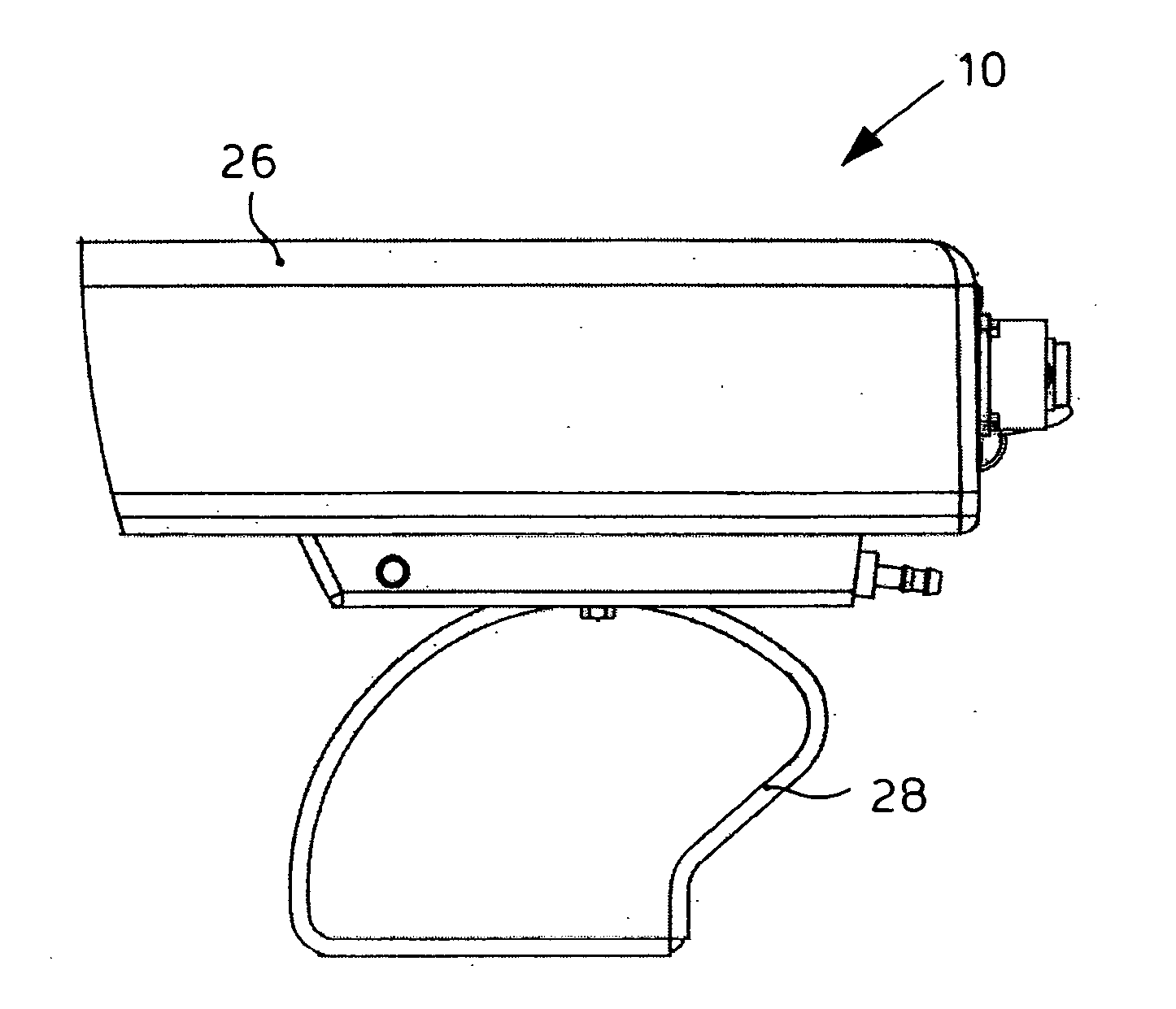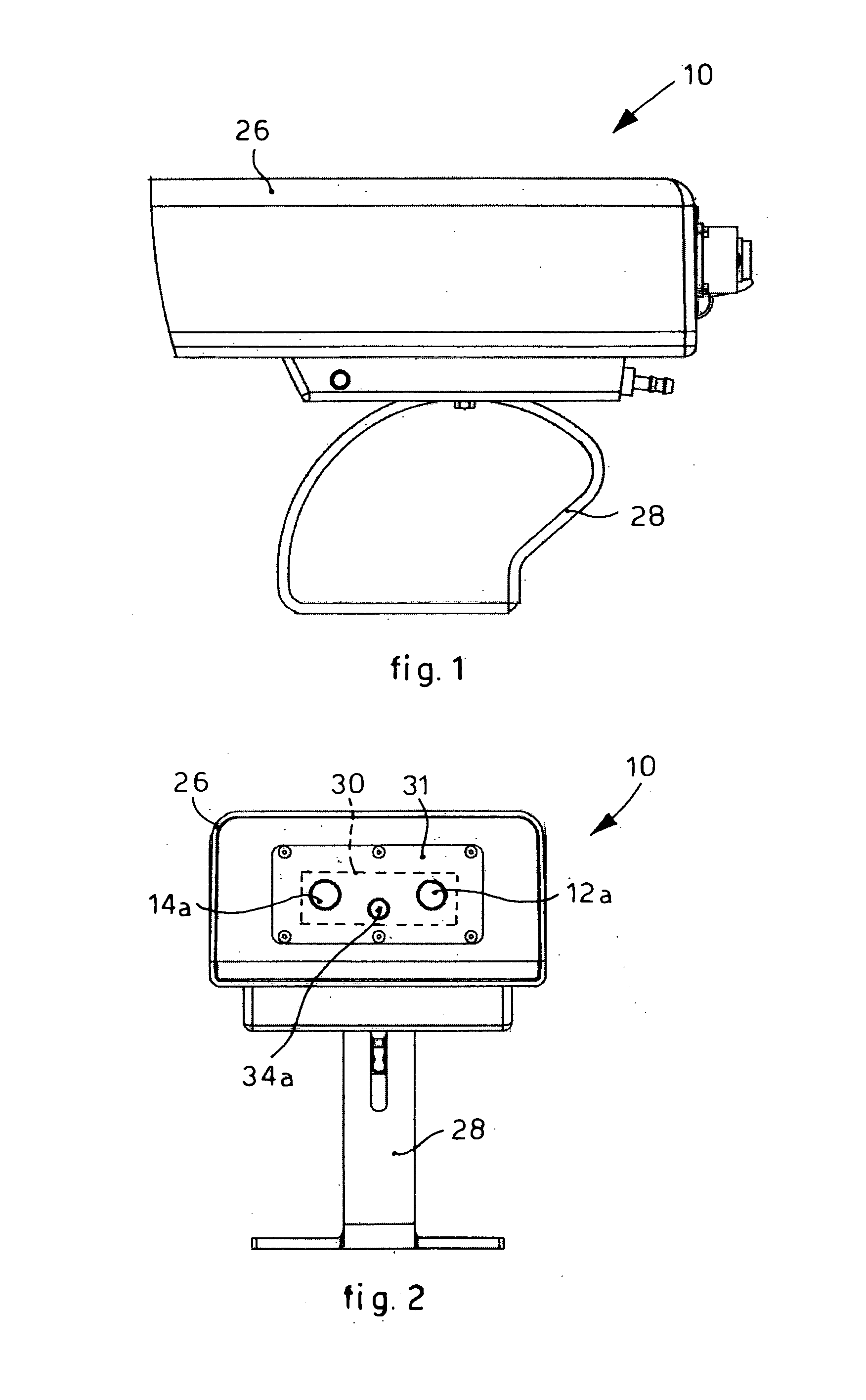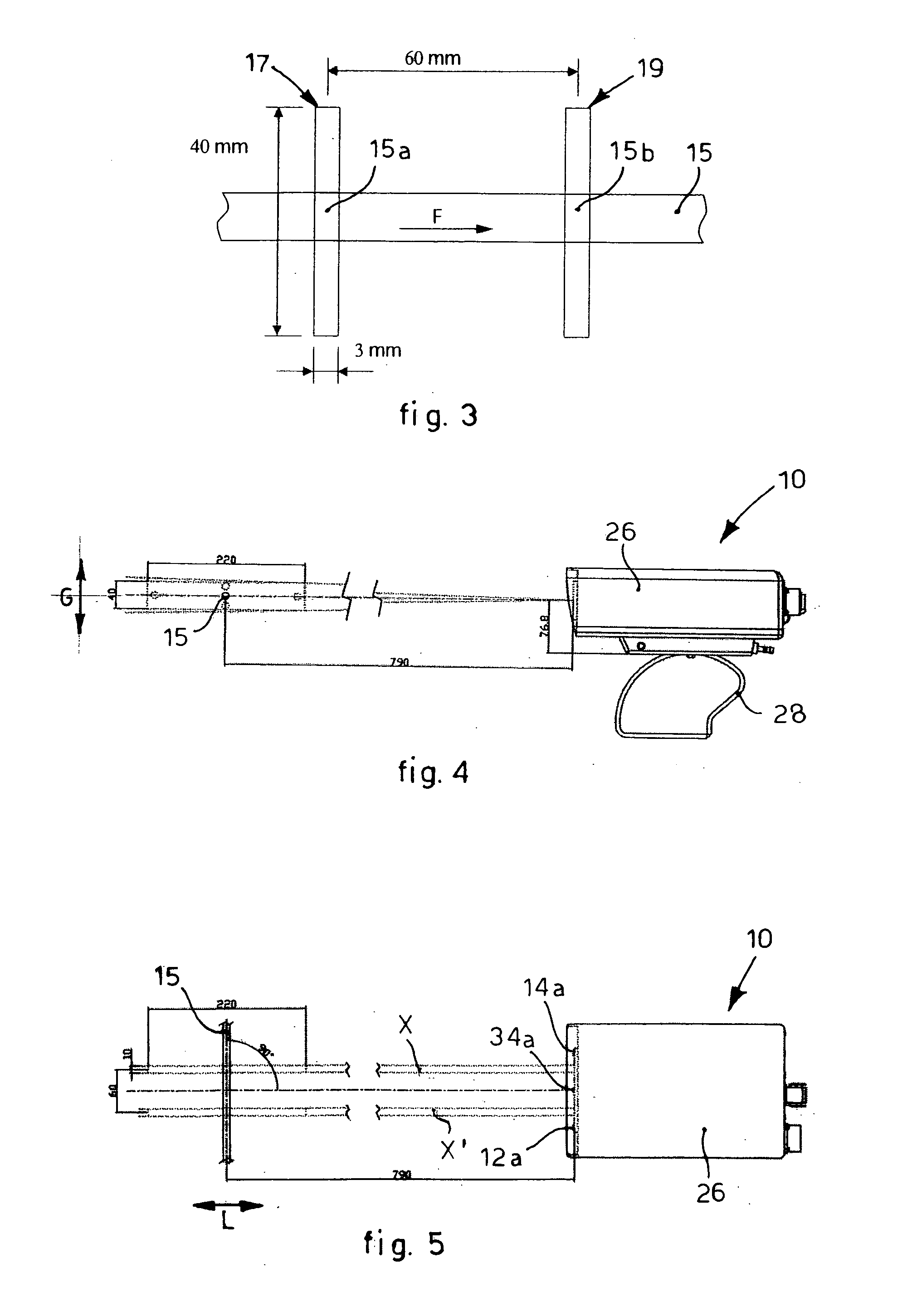Device for Measuring the Speed of Products in Movement, in Particular Metal Rolled Products in a Rolling Line, and Relative Method
a technology of oblong products and relative methods, which is applied in the direction of average speed measurement, devices using time traversed, devices using optical means, etc., can solve the problems of reduced measurement accuracy, unsuitable and/or ineffectiveness, and high cost and complexity, and achieves high reliability detection, facilitates orientation, and facilitates correct training of sensors
- Summary
- Abstract
- Description
- Claims
- Application Information
AI Technical Summary
Benefits of technology
Problems solved by technology
Method used
Image
Examples
Embodiment Construction
[0076]FIGS. 1 and 2 show a measuring device 10 for measuring the speed of oblong rolled products 15, for example a bar 15, moving along a hot rolling line. However, it should be remembered that the reference number 15 should not be understood as restrictive for the type of oblong product whose speed is to be measured. Indeed, the same measuring device 10 can be used, with the same purposes, for other oblong products moving and emitting radiations, advantageously infrared, without departing from the field of the present invention.
[0077]The measuring device 10 comprises optical units 13 (FIGS. 6, 7, 8, 9, 10, 11, 12a, 12b, 12c) associated with sensors, in this case two 12 and 14 (FIG. 11), which provide photodiodes, in this case sensitive to infrared wavelengths.
[0078]In some forms of embodiment, each optical unit 13 comprises a containing body 35, for example cylindrical, (FIGS. 11, 12a, 12b, 12c) inside which one of the sensors 12, 14 is housed, and a suitable lens 44 (FIGS. 9, 10, ...
PUM
 Login to View More
Login to View More Abstract
Description
Claims
Application Information
 Login to View More
Login to View More - R&D
- Intellectual Property
- Life Sciences
- Materials
- Tech Scout
- Unparalleled Data Quality
- Higher Quality Content
- 60% Fewer Hallucinations
Browse by: Latest US Patents, China's latest patents, Technical Efficacy Thesaurus, Application Domain, Technology Topic, Popular Technical Reports.
© 2025 PatSnap. All rights reserved.Legal|Privacy policy|Modern Slavery Act Transparency Statement|Sitemap|About US| Contact US: help@patsnap.com



